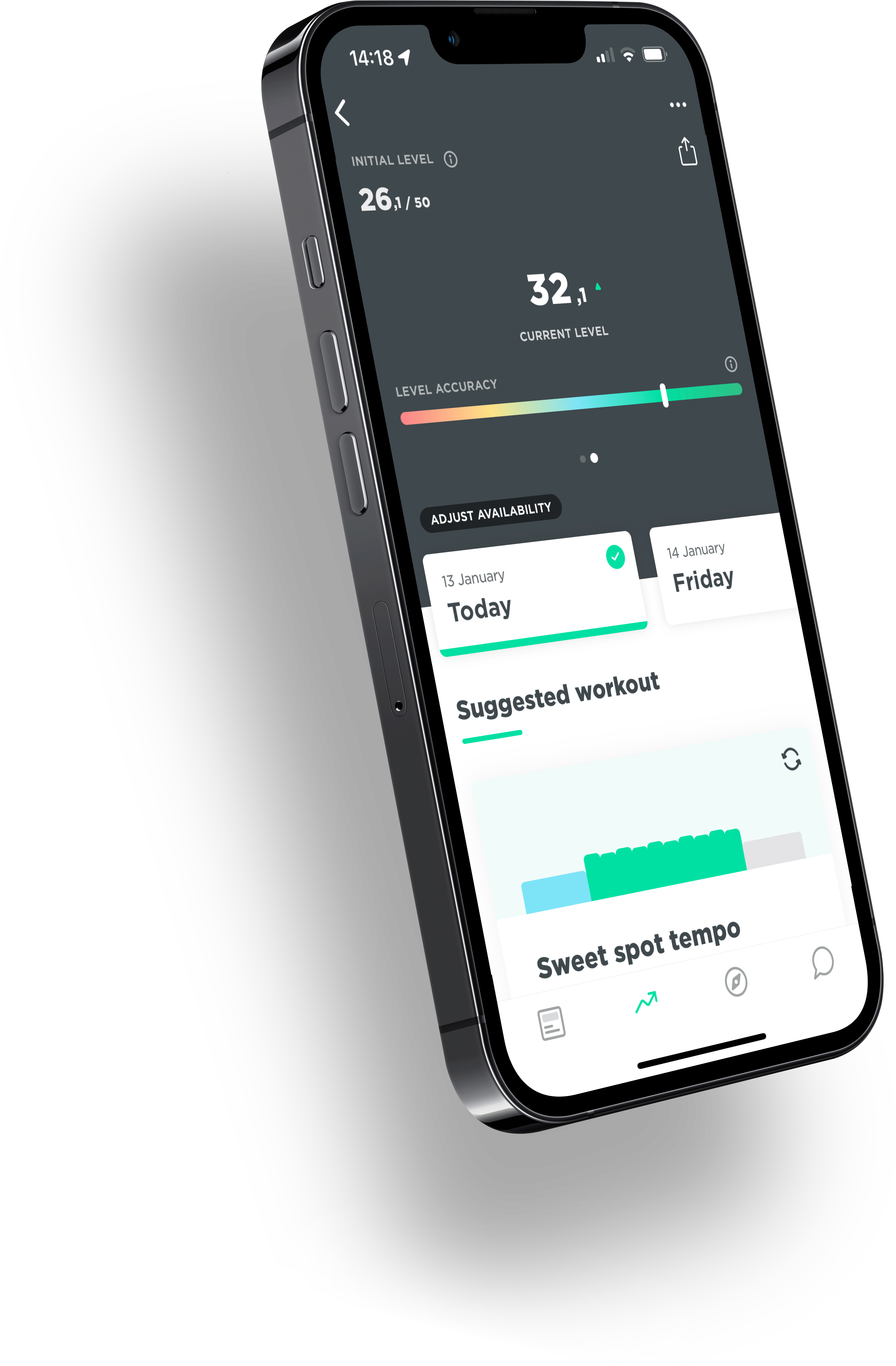What is FTP?
No bicycle race on television goes by without the commentators talking about FTP or power. More and more training plans are based on power. Maybe your training buddy just bought a power meter. As a cyclist you can’t ignore it, these days it’s all about power in cycling and often in the same sentence the expression FTP is used. Why do you need to look at power (and therefore a power meter)? In this article you will learn about the advantages of training with a power meter, knowing your FTP and how to improve.
Training load monitoring
A power meter is simply the best way to determine the training load. In the past, when athletes and cyclists wanted to monitor their training load, they started to do so in speed (km/h) and/or in time. But as you probably know, your speed is influenced by wind, temperature, altitude, etc. So speed is not the best way to analyze a training session or to monitor the training load.
The heart rate monitor was introduced in the 1970s and 1980s. A beautiful development, as the environment and circumstances have a much smaller influence on it. By measuring the heart rate, scientists and coaches thought they could measure exactly how hard your body actually works during a training session. But the knowledge about training grew and the heart rate turned out to be rather variable. It is influenced by factors such as temperature, altitude, stress, fatigue and fluctuates from day to day. Drinking a cup of coffee can boost your heart rate, while the training session doesn’t get any harder. So the heart rate as a valid and reliable way to measure training load was quickly questioned. As a result, the search for another way to determine the training load was embarked upon. If the heart rate had proved to be a valid and reliable way, the power meter would probably never have been invented. The power meter was introduced in the early 1990s. Lance Armstrong was one of the first professional cyclists to use a power meter to monitor his training load.
P=F*v.
What is power anyway? In mechanics, the formula is power: Power = Force x Speed (P=F*v). This means on a bike; the force on your pedals multiplied by the distance your pedals cover (measured as cadence). Power is a direct measure of your output, which is not influenced by external factors. Power instead of heart rate is also capable of monitoring improvement. As you improve, the power you can produce over a certain time interval will improve. This is not possible if you use speed or heart rate, your heart rate and speed could be the same while you are delivering more power.
Functional Threshold Power / FTP.
So with power, we can finally see what you’re really doing. In order to have a good idea of how heavy a certain exercise is for you personally, or to be able to make a good training schedule, we use training zones. There are different ways to classify the power zones. In the JOIN Cycling app, we use five zones based on your FTP. Your FTP can be determined by doing an exercise test. An exercise test shows you what you are good at and in what areas you can improve the most: it gives you insight into your aerobic and anaerobic threshold. A slightly less accurate way to determine your FTP is through a DIY, 20-minute test that you do on your indoor trainer or out on the road. This is actually a time trial of 20 minutes preceded by a good warm-up. 95% of the average power over those 20 minutes is a good estimate of your FTP.
Often the FTP power is divided by your weight, so you get a relative power in Watts per kilogram. This is a good way to bring the important role that your weight plays into the equation. That matters a lot with climbing. But in a sprint, on the other hand, it’s the absolute, raw power that counts!
Didm’t you do a proper FTP test yet, or do you not have a power meter and do you still want an indication of your FTP? Then calculate your FTP based on your speed with our unique FTP calculator.
Power meters.
Power meters are getting cheaper and cheaper. The most reliable power meters are the ones that sit in your bottom bracket or in advanced indoor smart trainers. Most power meters promise an accuracy of +/- 2%, with the smart trainers this is only +/- 1%. Power meters can also be in the crank or in your pedals and when power is measured on both sides they can show the balance between right and left. Some power meters only measure left, a cheaper alternative, but not the most reliable.
How to get better.
Getting better is all about timing. There are actually no good or bad workouts. There is only a bad combination or the wrong workout at the wrong time. The path to progress is therefore a training plan with the right training stimulus, taking into account your level, goal and available time. To help you with that we developed an algorithm in the JOIN Cycling application. It provides you with a highly flexible and personalized training plan to make sure that you make the most out of your rides.
After reading how much you can improve your Functional Threshold Power (FTP; the power you can sustain for 60 minutes), it is equally important to know how you can realize that! In many cycling groups, the discussion quickly turns to someone’s FTP. It is considered the benchmark of someone’s cycling performance.
Why FTP?
The FTP appears to be seen as the true cyclist performance indicator and is linked to almost every discipline in cycling that takes 4 minutes or longer. It provides a real insight into someone’s aerobic metabolism and efficiency. We usually talk about the FTP in the context of power, but the heart rate at around the FTP level is called the threshold heart rate. So the power performance at the threshold heart rate is also the FTP. The FTP can be analyzed in 2 ways; namely in absolute terms (for example 300 W) or relative (for example 4 Watt/kg). Whereby the latter number is a good indicator for your speed on a climb. So the higher your FTP in terms of W/kg, the faster you will ride up the Alpe d’Huez. One kilogram less weight at the same power output can easily save you one minute on a climb of one hour. In this article we look at improving the absolute FTP. Obviously, you can even further increase the relative FTP by losing weight, but we save that part of the equation for another article.
What is the best thing to do to improve my FTP
To Train! Actually, it is the simplest answer there is, but also true: as long as you get off the couch and jump on the bike you will start improving your FTP. In fact, there is basically no “bad” training to improve the FTP. Everything the aerobic system uses during training is basically a stimulus for the body. Of course, it is true that certain workouts and combinations of different workouts work better if you are looking to improve your FTP. In the past, people thought that training at the threshold heart rate/FTP would improve the FTP. So they did a lot of very hard workouts. But this also caused a lot of fatigue and often only a small increase in the FTP. In order to know which training sessions are the best, it is important to look at the various different elements of the performance at the threshold heart rate or FTP.
Physiological components of the FTP point
Physiologically speaking, the FTP is the point at which the production and the breakdown of lactate are just about in balance still. In scientific literature this is also called the Maximal Lactate Steady State (MLSS). This means there is acidification, but it is kept under control and therefore sustainable over a longer period of time. Looking at the internal factors that determine FTP, there are actually three:
VO2max: the maximum aerobic capacity. This intensity can only be maintained for 4-8 minutes as lactate production is much higher than breakdown of it. This forms the ceiling of your aerobic efforts.
FTP as a percentage of VO2max: the equilibrium of the lactate production/breakdown. At untrained riders this will be around 50%, while pro riders in the Tour de France can hit 90%.
Efficiency: how much power your body can release per liter of oxygen at the turning point. A high VO2max is of course nice, but if your body is not very efficient you will not notice much of it when you are out on the road.
Training to improve the FTP
Now that we know out of which 3 components the FTP consists, we want to train them individually. Below we indicate which type of training is specific to these three components. Not entirely in random order!
The long endurance training: endurance training in which the length of the training mainly determines the effect. Riding harder during your endurance training therefore makes little sense; it only brings more fatigue while it does not strengthen the stimulus itself. Because the muscles are continuously loaded during your endurance training, this is a very strong stimulus for the aerobic system, as it ensures an increase of the mitochondria (energy factories) in the muscles. The more mitochondria you have (and the better they function) the higher your VO2max, but also the better the body is at buffering the lactate that is being generated while exercising. So the long ride increases your VO2max, improves efficiency and, most importantly, increases the FTP as a percentage of your VO2max.
Threshold: or long intervals (95-105% FTP). These long intervals (4-15 minutes) at or just above the threshold provide a specific stimulus for the FTP. They really make you better at tolerating and breaking down the lactic acid created by training at a high percentage of the VO2max. The problem with these stimuli is that they are also very tiring and therefore should not be done very often.
VO2max: or short intervals (105-120% FTP). These short intervals (2-5 min) are especially effective for improving the VO2max itself, so they help to lift the threshold levels. During the short intervals you are really at the limit of your aerobic system.
Tempo/Sweetspot intervals: long blocks below the threshold. Because the intensity is below the threshold, around 85-95% FTP, the body remains in a steady state. This makes it easier to spend more time at a relatively high percentage of VO2max. If you also execute these intervals at a somewhat lower cadence, this is a very good stimulus that will ensure an increase in efficiency.
Conclusion
There are many different ways that help to improve your FTP. Basically you can pick between two different approaches. The traditional method combines relatively frequent tempo and threshold training sessions, while the ‘modern’ approach mixes mainly long, steady endurance training with short, intense Vo2max training. This ‘new’ method is also called polarized training and you can read more about it in this article. Both approaches work and what is the best one for you depends on your training history and your goals. As mentioned earlier, there are several roads that lead to Rome. The most important thing is to see which aspect is the one where you can improve the most. You can find this out by properly mapping out your performance, for example by doing an exercise test.


